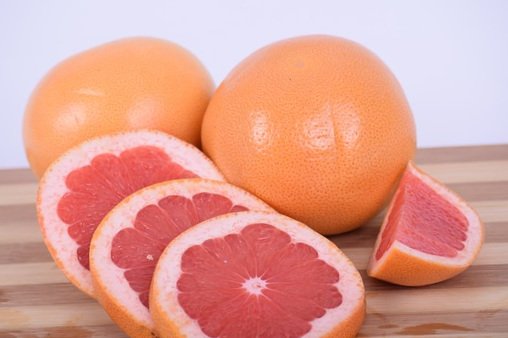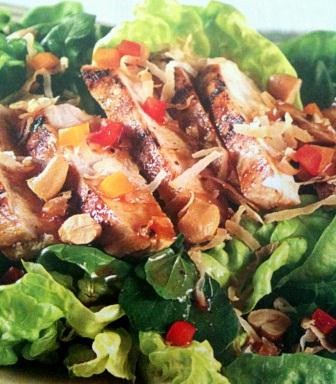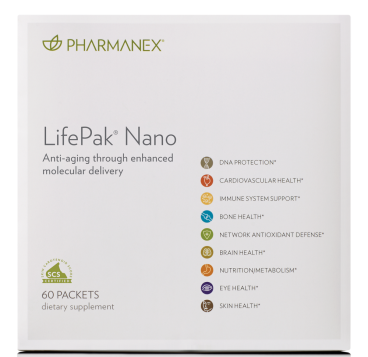While she prepared the tubes for my blood draw, we chatted easily. Over the last 2 years Gwen and I had become fond of each other. She was complaining again about her constant body pain and digestion, and how the stress of working at the lab was becoming almost too much to handle.
Gwen is about 45, divorced, overweight and due to childhood and young adult experiences, doesn’t believe she deserves good things to happen to her. We’ve all met people like Gwen; their families aren’t what they would have wished for and life traumas left imprints that are difficult to overcome. Gwen has a lovely person with a sweet smile. She has a sense of humor that she hides behind. I like her very much.
Leap of Faith
I decided to take a leap of faith that she brought up her situation again as a subtle request for help. She knew I consulted with several prominent integrative doctors, and was always curious about what I learned. I asked if she would please try to cut back on sugar and carby foods from her diet for just 2 weeks. I asked what vegetables she liked, and she laughed knowing I was going to disapprove of her answer.. “Lettuce?” she offered.
“And…?” I wasn’t going to be put off by her attempt at diverting me with humor.
“Well, I don’t know.. carrots?”
“Are you serious?” I teased, “First of all you’re asking me.. instead of telling me, so I don’t think you know what a vegetable is!”
Gwen laughed again, ”Well they don’t all taste great.”
“Some phlebotomist!” I teased.
A Serious Chat
When she was completed the draw, I spoke to her about the dangers of chronic inflammation. I said I would come back in a couple of days with a biophotonic antioxidant scanner which I borrow from a doctor-friend, to test her. I added that if she wanted me to try to help her, I would need a promise that she would follow what I suggested… else there would be no point in trying.
She smiled at me with an intense expression in her eyes that told me no one had offered to help her before. but she was also looked scared to know what may be going on with her health.
“Ok. so here’s the deal. I will try to come here after work two days a week, and we’ll go for a 20 minute walk on your break as a start. Can you do that?”
She said it would depend on how many patients they had and how many other staff were around, to call first.
Two days later, I showed up with the scanner. Two of Gwen’s colleagues wanted to get scanned as well. Their results were borderline. Needless to say, Gwen’s result was very bad. Her immune system was overtaxed and weak.
“Did I flunk?” she asked jokingly.
I felt compelled to be straight with her. “Your score is not ok, but we knew it wasn’t going to be. You’ve got to start eating well, and I think you may want to take strong antioxidants to help your body fight whatever is going on. I’m not joking, Gwen, you are very vulnerable, and the aches and pain you feel all day long are telling you things have to change.”
She looked at me quietly and nodded.
“So when people bring donuts and bagels here, you need to have food you bring from home so you’re not tempted. We’re going to consider junk food as poison.”
“What would I bring?” she asked me with a blank look.
“Berries, a hard boiled egg, a gluten-free slice of healthy bread with hummus or a salad. Go to my website and browse around. Make only from those recipes… and let’s see what happens in a couple of weeks.
The Next Few Weeks
We never did walk, because either my work or hers got in the way. But she told me she was taking occasional walks with a neighbor friend. I dropped by once for fun, and someone had bought donuts! She immediately shouted, “Not me! I didn’t touch them!”
I texted her a couple of times during the next few weeks to see how things were going. She wasn’t very forthcoming with details… but I didn’t want to push. I knew that for Gwen, eating was part of her emotional world. I went through that after my sister, and then my brother-in-law passed barely 24 months apart. I gained almost 20 lbs that I wasn’t able to shed until I had to. Cutting out sugar and simple carbs was all I had to do.
Food and Emotions
It's not news to anyone that when we feel lonely, and unloved or unlovable, food is a source of solace. And not just any food, but foods that give us the necessary blood sugar high. So we gravitate to baked goods, cookies and sweets or rich foods. And after we’ve indulged we either feel bad, or convince ourselves no harm done.
We might think, “Well, I’m already too heavy, half a pound more or less isn’t going to make a difference.” But half a pound more every week or two does make a difference.
I had low back pain, I hated that when I sat down I had two rolls of fat around my waist. When I was dating, I would wear tops that hid my mid-section… and yet, I didn’t take massive action.
Funny thing is that I was aware of proper nutrition and healthy foods. I am a chef after all, and fed my children well-rounded meals and very little junk. So I hardly ever ate fried or creamy foods, or too many sweets.. but bread, cheese and rice were part of every day’s fare. And even though accompanied by many vegetables and salads, they have their effect.
Gwen had larger emotional scars than mine, so I cut her some slack, but I knew she had to do something soon before her body gave in to whatever was brewing.
Fate Steps In
When I returned for another set of blood tests 6 months later, Valerie greeted me. “Where’s Gwen?” I asked.
“Don’t you know? She’s been out for a week.” she replied.
“No, I didn’t know! What’s up?”
“Oh, my goodness, I thought she would have called you. She fainted while on a walk, and then she had hemorrhaging so they’re doing tests.”
“You’re kidding! Gosh I sure hope she’s ok… thank you for telling me. I’ll call her this afternoon for sure.”
Valerie walked me to the cubby where she was going to draw my blood, “I wish you would. She’s not doing well.”
I felt like I let Gwen down. I had tried, but when you feel someone just can’t go it alone, and the only way they can make a drastic change is to have you there to coach and cheer them on every day, it’s hard to know what to do. At one point, I was going to offer her our garage conversion to come live in, at least for a few months while she taught herself a new way of thinking, eating and living. But there was no way she was going to leave her home, and I never brought it up. I guess I just hoped she could find the resolve to start making a change.
When she told me about some of the devastating experiences she had as a teenager and young adult, I said that I had been sent into her life for a reason then, because with the right perspective she could let go of all that pain and realize she is not the person she was then, and if it were not for this thing we call ‘memory’, she would be a shooting star! She hugged me.
Face the Truth and Make a Change
We are all a little like Gwen in some way. We all talk ourselves into accepting situations, or habits that span years as ‘normal’, and harmless. I mean, if you’ve been eating badly for 12 years and other than the weight gain, or occasional aches and pains, or headaches, or skin conditions, you’re ok.. well, what’s the problem?
We keep on trucking in the same groove until one day, like Gwen, like me, BANG! Something unexpected happens.. a lump, a fainting spell, chest pain, an abnormal blood test.
You know what many of us think in that first moment of realization? … ‘Wait, that can’t be happening to me!’
And the second thought…? ’If only I had paid more attention to blahdeeblah.’
Gwen knew things were bad. Gwen knew her body was breaking down. Why couldn’t she, why can’t we, stop ourselves from being stuck in same pattern? Why is it necessary for so many to hit the wall before embracing behavior that is good for health and well-being? I’ve always been curious about the psychological barriers we all struggle with. When I called Gwen, do you know what the first thing she said to me was?
“I messed up. I didn’t listen to you.”
I hated hearing those words. I told her, “Yes, you did, you stubborn monkey. And I wish I could turn the clock back.”
Gwen was waiting to hear back on a number of tests. She was weak, and in bed most of the day. I asked her to start eating certain foods, and to send her daughter out to get the 3 supplements we talked about. She promised to do so. I recommended she watch happy uplifting videos, and no matter what the results were, to remember there is a world of options.
Don’t be another Gwen. Only YOU can reduce your risk and improve your health. Being 20+ lbs overweight is the gateway to a host of inflammatory diseases.
Our body can’t handle processing all the toxins we’re exposed to in the world, plus the preservatives in processed foods and personal products, plus the pesticides on non-organic produce, plus the effects of smoking or drinking alcohol or eating too many carbs. Living with environmental pollution alone overtaxes our liver and kidneys.. but pile on all that other stuff and we’ve created a recipe for disaster.
It’s a hard journey back to health once it’s lost.
We are victims of money-hungry food manufacturers that spend billions to create flavors and textures that will hook us to their nutrition-deficient products. Stand up and find your strength to resist.
If you struggle, find a friend or family member who will actively support your effort to make a change. Limit yourself to eating only foods you cook and look up recipes on this blog.
And if you like together we can devise a plan that will work for you. Contact me.
I wish you a long and healthy life.





























 on a moderate intensity activity is 150 minutes per week.
on a moderate intensity activity is 150 minutes per week.